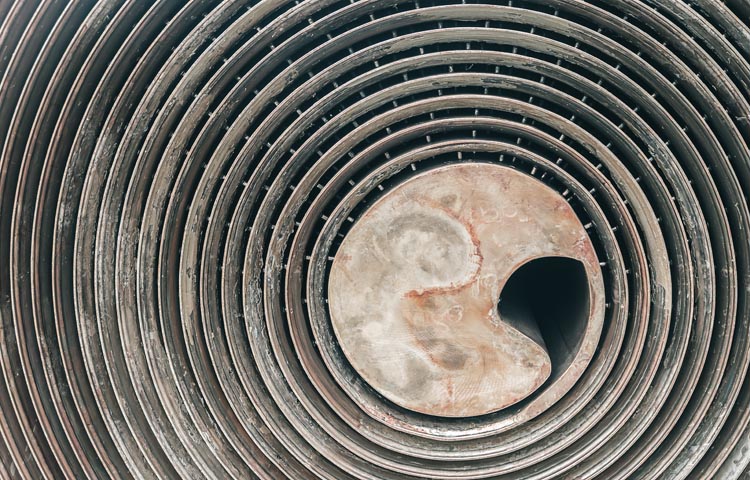

Spiral Plate Heat Exchangers: Working Principle, Advantages,
and Applications
1. What are Spiral Plate Heat Exchangers?
- Spiral plate heat
exchangers are compact and efficient devices used for heat transfer between
fluids, typically liquid-to-liquid or gas-to-liquid.
- These exchangers
utilize a series of spiral plates through which heat transfer occurs.
- The unique shape
of the spiral plates provides a large surface area for efficient heat exchange.
2. Working Principle:
- In a spiral plate
heat exchanger, the hot fluid passes through the spiral channels formed by the
plates, while the cold fluid flows through the gaps between the plates.
- Heat transfer
occurs at the points where the two fluids come into contact.
- As the hot fluid
passes through the spiral channels and the cold fluid passes through the gaps
between the plates, heat is exchanged between them.
3. Advantages of Spiral Plate Heat Exchangers:
- Compact Design:
Despite their large heat transfer surface area, spiral plate heat exchangers
have a compact footprint, allowing for space savings and installation
flexibility.
- High Efficiency:
The spiral plates provide a large surface area, resulting in high heat transfer
efficiency. This leads to energy savings and low operating costs.
- Self-Cleaning
Capability: The spiral configuration of the plates allows for easy flow of the
fluid without accumulation, facilitating self-cleaning and maintaining
efficiency.
- Flexibility:
Spiral plate heat exchangers are versatile devices that can adapt to different
temperature and pressure conditions.
4. Applications:
- HVAC Systems:
Spiral plate heat exchangers are widely used in heat recovery and ventilation
systems. They are an ideal choice for climate control and energy recovery.
- Industrial
Applications: Spiral plate heat exchangers find applications in the chemical,
petrochemical, food, and beverage industries. They are used for liquid cooling,
heat recovery, process control, and various other applications.
- Power Generation:
Power plants and thermal energy facilities utilize spiral plate heat exchangers
for energy recovery and efficient heat transfer, reducing operating costs.
5. Maintenance and Cleaning:
- Regular
maintenance is important to ensure the efficiency and longevity of spiral plate
heat exchangers. This includes cleaning the plates, inspecting the flow
channels, and performing necessary repairs.
6. Conclusion:
- Spiral plate heat
exchangers are efficient devices used for heat transfer in liquid-to-liquid or
gas-to-liquid applications.
- With their
compact design, high efficiency, self-cleaning capability, and flexibility,
they are widely used in various industries.
- Regular
maintenance and cleaning help maintain optimal performance and prolong the
lifespan of spiral plate heat exchangers.
This content example provides detailed information about
spiral plate heat exchangers, including their working principle, advantages,
and applications. You can use this information to create a comprehensive
content piece on your website, providing your readers with a deeper
understanding of spiral plate heat exchangers.
TO GET DETAILED INFORMATION ABOUT THIS PRODUCTCONTACT US

Check out our catalog to examine the details of our products.


